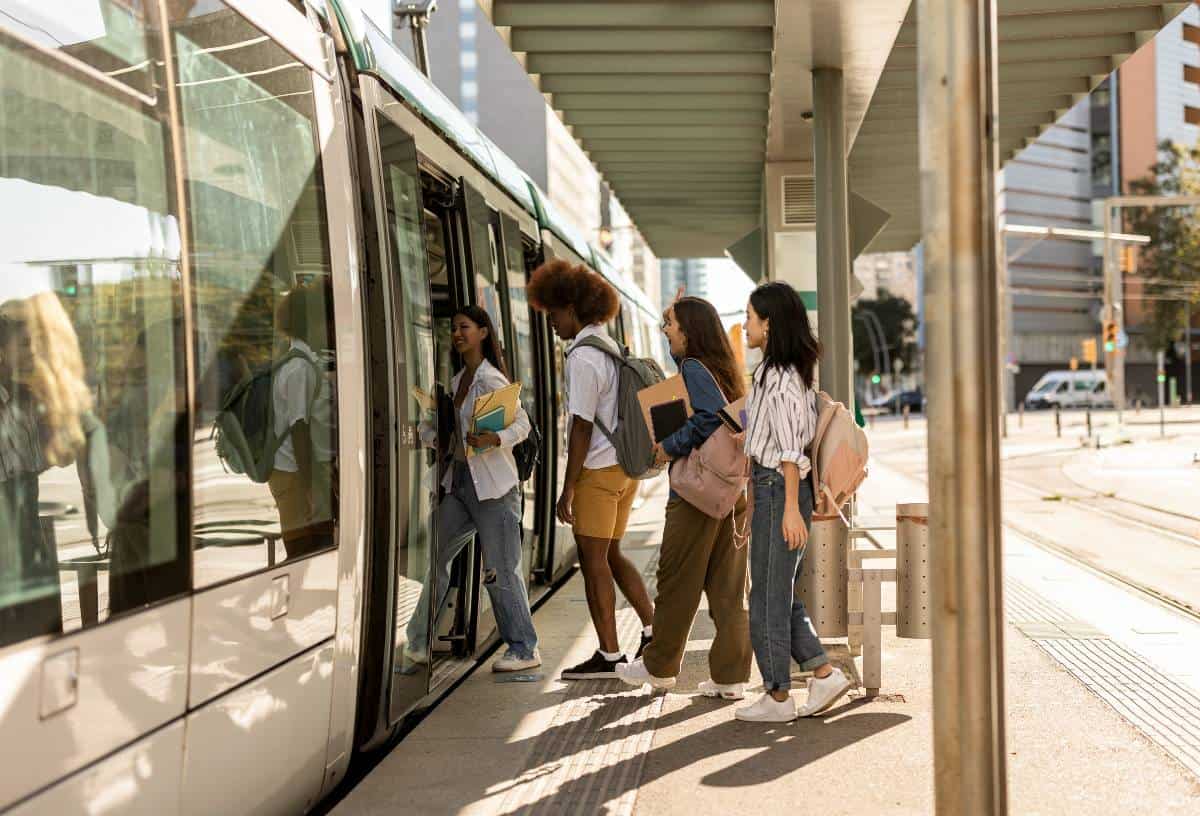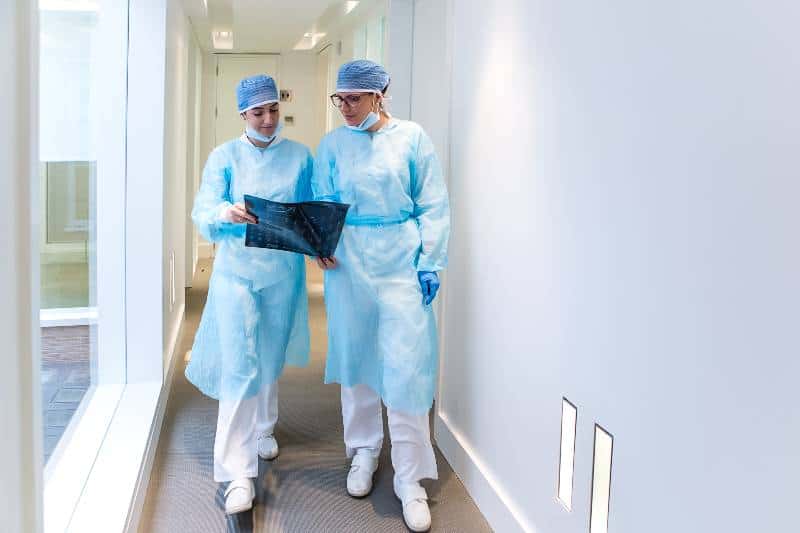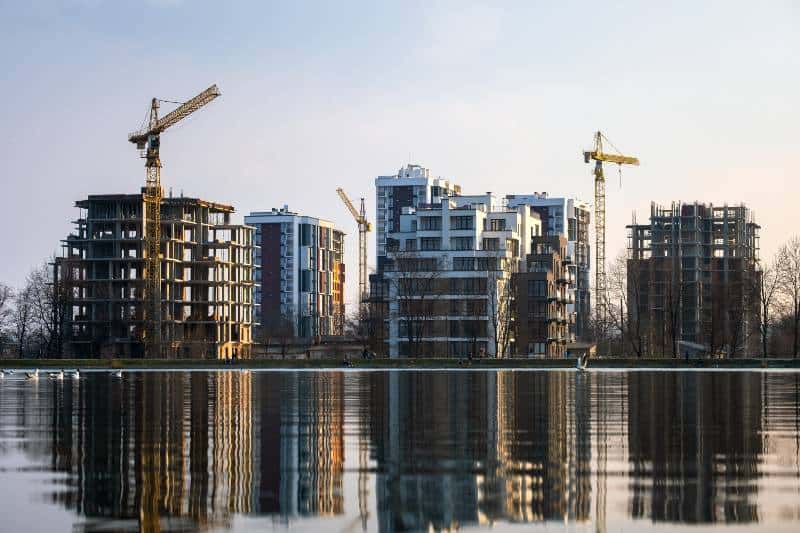Hey there, Mike Tolj here, your go-to guy for all things commercial real estate in LA. Today, I want to chat with you about something that’s been shaking up the industry lately: the expansion of LA’s public transit system. Now, I know what you might be thinking – “Mike, what does public transit have to do with commercial real estate?” Well, let me tell you, it’s a game-changer.
LA’s been through quite a journey with its transit system, from the early days of streetcars to the rise of the automobile. But in recent years, we’ve seen a resurgence of rail transit that’s reshaping the city’s commercial real estate landscape. Buckle up, because we’re about to dive into how this transformation is unfolding and what it means for business owners and landlords like you.
Key Takeaways
- LA’s public transit expansion is transforming the city’s commercial real estate landscape, driving demand for transit-oriented development (TOD) and reshaping neighborhoods.
- Transit improvements are influencing shifting preferences and demand, with a growing appeal for walkable, bike-friendly neighborhoods and the integration of retail and office spaces in TOD projects.
- Embracing TOD is crucial for LA’s future, promoting sustainable urban growth, addressing housing affordability, and fostering vibrant, connected communities.
Table of Contents
Explore LA Public Transit On Commercial Locations
Los Angeles is known for its sprawling landscape and infamous traffic, but did you know that the city also boasts one of the best public transportation networks in the country? That’s right, you can easily navigate the City of Angels without ever getting behind the wheel! Let’s dive into the major public transit options and how they can take you to the hottest commercial spots in town.
Understanding the Metro Bus Services
Picture this: you’re standing on a bustling street corner, and up rolls a sleek, shiny Metro Bus. With a whopping 117 routes covering the entire Greater Los Angeles area, the Metro Bus system is like having your chauffeur. And the best part? They’ve made it super easy to plan your trip.
Just hop on the Metro website and use their handy Trip Planner. It’s like having a travel agent at your fingertips! Punch in your starting point and destination, and boom – you’ve got step-by-step instructions on which buses to take and where to transfer. It’s a breeze!
But wait, there’s more! Metro has also partnered with Google Maps to make navigation even simpler. Plus, they’ve got a whole list of Rider Apps that let you plan your route, track your trip, and even pay your fare all in one place. Talk about convenience!
Benefits of Utilizing Metro Rail
| Line | Route | Highlights |
|---|---|---|
| A Line (formerly Blue Line) | Azusa to Long Beach | Whizz from the beach to downtown in minutes |
| E Line (formerly Expo Line) | Santa Monica to East LA | Find yourself at the doorstep of the iconic Santa Monica Pier |
Now, let’s talk about the crown jewel of LA’s public transit system: the Metro Rail. This baby features six lines (four light rail and two subway) that connect you to 101 stations across the county. It’s like having your high-speed train!
Imagine whizzing from the beach to downtown in a matter of minutes on the A Line (formerly the Blue Line). Or hopping on the E Line (previously known as the Expo Line) and finding yourself at the doorstep of the iconic Santa Monica Pier. With Metro Rail, the possibilities are endless!
But here’s the kicker: using Metro Rail isn’t just convenient, it’s also a smart choice for the environment and your wallet. By ditching your car and opting for public transit, you’re reducing your carbon footprint and saving some serious cash on gas and parking. It’s a win-win!
Exploring Commercial Hotspots
| Station | Highlights |
|---|---|
| 7th Street/Metro Center | Connections to A, B, D, and E Lines; access to Staples Center, LA Live, and Fashion District |
| Hollywood/Highland | Heart of Tinseltown; Hollywood Walk of Fame, TCL Chinese Theatre |
| Universal City/Studio City | Gateway to Universal Studios Hollywood |
Now that you’re a pro at navigating LA’s public transit system, let’s talk about some of the awesome commercial locations you can check out. The options are endless, but here are a few favorites:
- 7th Street/Metro Center: This hub is like the Grand Central Station of LA. With connections to the A, B, D, and E Lines, you can easily access popular spots like the Staples Center, LA Live, and the Fashion District. Get ready to shop till you drop!
- Hollywood/Highland Station: Ready for your close-up? This station drops you right in the heart of Tinseltown. Take a stroll down the Hollywood Walk of Fame, snap a selfie with your favorite celebrity’s star, and catch a movie at the legendary TCL Chinese Theatre.
- Universal City/Studio City Station: All aboard the entertainment express! This stop on the B Line is your gateway to the world-famous Universal Studios Hollywood. Spend a day exploring the theme park, taking the legendary Studio Tour, and immersing yourself in your favorite movies and TV shows.
Accessing Commuter Express Services in Downtown Los Angeles
The Los Angeles Department of Transportation (LADOT) offers a convenient and efficient solution for commuters traveling to and from Downtown Los Angeles during peak hours: the Commuter Express. This service provides a reliable alternative to driving, allowing passengers to avoid traffic congestion and reduce their commute times.
| Service | Description |
|---|---|
| DASH | A network of localized bus services that connect riders to the larger Metro Rail and Bus system. DASH routes cover 27 neighborhoods, providing frequent and affordable service. |
| Commuter Express | Offers rush-hour service to and from Downtown LA, with limited stops for faster travel times. |
| Cityride | A transportation assistance program for individuals aged 65 and older and qualified persons with disabilities residing in the City of Los Angeles and select areas of Los Angeles County. |
Commuter Express Routes and Stops
Commuter Express operates on weekdays, providing service to Downtown LA during the morning and afternoon rush hours. The routes are designed to minimize stops, ensuring quick and efficient travel times for passengers. Communities served by Commuter Express span a wide area, from the San Fernando Valley to San Pedro and beyond.
Fare Payment Using TAP Card
To utilize Commuter Express services, passengers must have a TAP Card loaded with either a Commuter Express 31-Day Pass or a Trip Ticket. The fare system is based on a zone structure, with five zones labeled as Base and Zones 1-4. The fare price depends on the number of zones traveled. All Commuter Express 31-Day Passes and Trip Tickets are conveniently sold on TAP Cards, making fare payment quick and easy.
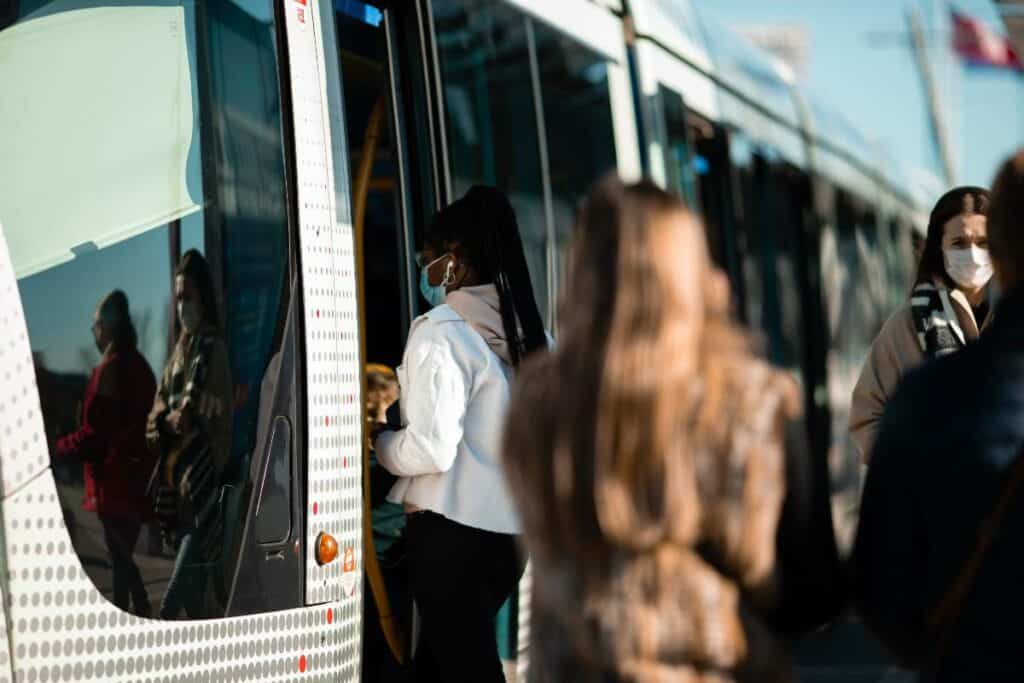
Key Features of LADOT Transit Services
LADOT operates the second-largest transit fleet in Los Angeles County, providing essential services to nearly 30 million passengers annually. With 46 routes covering a vast area, LADOT plays a crucial role in keeping Los Angeles moving.
LADOT Transit Services Overview
- DASH: A network of localized bus services that connect riders to the larger Metro Rail and Bus system. DASH routes cover 27 neighborhoods, providing frequent and affordable service.
- Commuter Express: Offers rush-hour service to and from Downtown LA, with limited stops for faster travel times.
- Cityride: A transportation assistance program for individuals aged 65 and older and qualified persons with disabilities residing in the City of Los Angeles and select areas of Los Angeles County.
Obtaining an EZ Transit Pass
EZ transit passes offer seamless travel across multiple transit agencies in Los Angeles County. These passes can be purchased at any Metro bus or rail station where TAP Cards are sold. EZ transit passes are loaded onto TAP Cards, making it simple for riders to transfer between different transit systems without the need for multiple fare media.
Supporting Commuters Through LA’s Public Transit Network
Los Angeles’ extensive public transit network, comprising Metro Rail, Metro Bus, and various LADOT services, provides commuters with various options to meet their daily transportation needs.
Commuter Express 31-Day Pass Benefits
For frequent Commuter Express riders, the 31-Day Pass offers unparalleled convenience and savings. This pass allows unlimited rides on any Commuter Express route for 31 consecutive days from the first day of use. By loading the pass onto a TAP Card, commuters can easily access Commuter Express services without the need for daily fare purchases, streamlining their commute and reducing the risk of fare evasion.
The Importance of DASH in Urban Transportation
DASH buses play a vital role in connecting communities and facilitating access to the larger Metro Rail and Bus network. By providing frequent, reliable, and affordable service within specific neighborhoods, DASH helps bridge the first-mile/last-mile gap, making public transit more accessible and convenient for riders. This service is particularly important in densely populated areas, helping to reduce traffic congestion, improve air quality, and enhance overall urban mobility.
Los Angeles’ public transit network, including Commuter Express and DASH services, offers commuters efficient, reliable, and cost-effective solutions for their daily transportation needs. By leveraging the convenience of TAP Cards and the extensive coverage provided by LADOT and Metro, commuters can navigate the city with ease while contributing to a more sustainable and livable urban environment.
The Rise, Fall, and Rebirth of LA’s Rail Transit
Let’s take a quick trip down memory lane. LA’s streetcar system was once the envy of the nation, connecting neighborhoods and driving the city’s growth. But as the automobile gained popularity, rail transit took a backseat, and LA became known for its sprawling freeways and traffic jams.
Fast forward to the 1980s, and rail transit started making a comeback. The Metro Blue Line opened in 1990, marking the beginning of a new era for LA’s public transit. Since then, we’ve seen a flurry of transit expansion projects, like the Metro Expo Line and the Metro Purple Line Extension, connecting more parts of the city than ever before.
These projects have breathed new life into neighborhoods, making them more accessible and attractive to businesses and residents alike. It’s like watching a city reinvent itself before your eyes, and trust me, as a commercial real estate professional, it’s an exciting time to be a part of it.
The Impact of Transit Improvements on Commercial Real Estate
So, what does all this mean for commercial real estate? In a word: opportunity. The expansion of LA’s public transit system has sparked a surge in demand for transit-oriented development (TOD).
TOD is all about creating vibrant, mixed-use communities centered around transit stations. Think apartments, offices, shops, and restaurants, all within easy walking distance of a train or bus stop. It’s a concept that’s gaining popularity across the country, and LA is no exception.
One of the biggest impacts of transit improvements on commercial real estate is the rise in property values near transit stations. Businesses and investors are waking up to the potential of these locations, and they’re willing to pay a premium to be part of the action.
But it’s not just about the money. Transit-oriented development is also driving neighborhood revitalization and economic development. Take a look at some of the successful TOD projects in LA:
| Project | Location | Impact |
|---|---|---|
| Wilshire/Vermont Station | Koreatown | Transformed a once-struggling area into a thriving hub of activity |
| Hollywood/Highland Center | Hollywood | Attracted new businesses and residents, creating a ripple effect of economic growth |
Of course, it’s not all sunshine and rainbows. Developing near transit stations comes with its own set of challenges, from zoning restrictions to community opposition. But the rewards are worth it, and savvy commercial real estate professionals are finding ways to navigate these obstacles and make TOD projects a reality.
Shifting Preferences and Demand
It’s not just the physical landscape that’s changing with LA’s transit expansion. We’re also seeing a shift in what people want from their neighborhoods and workplaces.
Millennials and Gen Z are leading the charge, with a growing preference for walkable, bike-friendly communities that offer easy access to transit. They’re ditching the car-centric lifestyle of their parents and embracing a more sustainable, connected way of living.
This shift in preferences is driving demand for a new kind of commercial real estate – one that prioritizes livability, accessibility, and community. Businesses are taking notice, too, recognizing that locating near transit can help them attract and retain top talent.
But it’s not just about catering to the younger crowd. Transit-oriented development also offers significant environmental and health benefits. By reducing dependence on cars and promoting active transportation like walking and biking, TOD can help reduce air pollution, traffic congestion, and greenhouse gas emissions. It’s a win-win for businesses, residents, and the planet.
Of course, we can’t talk about commercial real estate in LA without addressing the elephant in the room: housing affordability. As property values rise near transit stations, there’s a risk of pricing out low- and moderate-income residents. But transit-oriented development can also be part of the solution, by creating more housing options and promoting mixed-income communities.
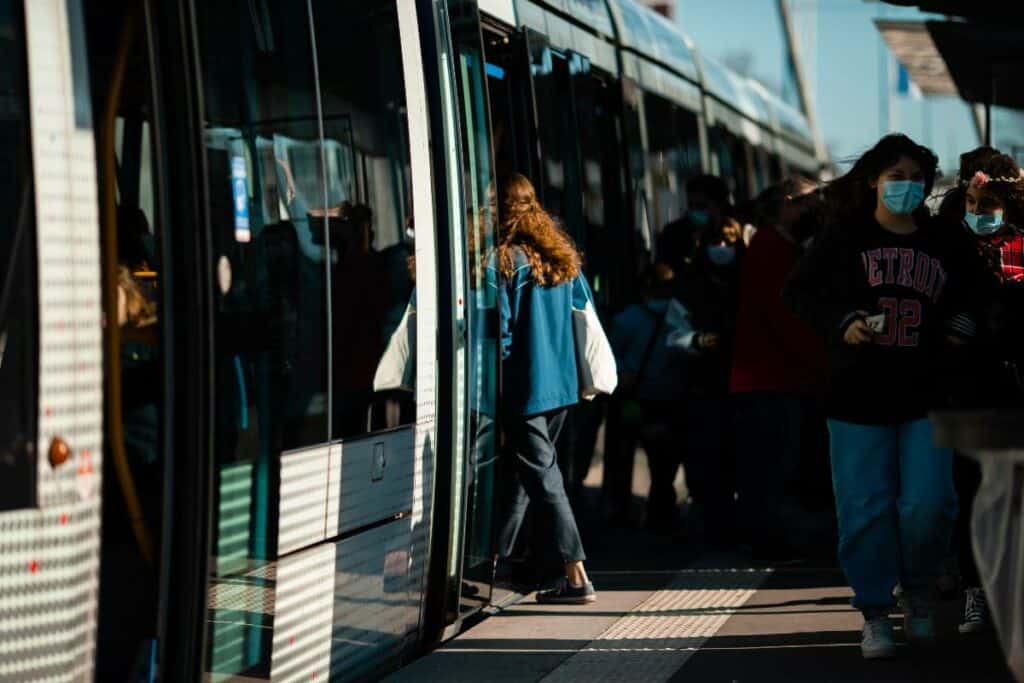
Transit-Oriented Development and the Retail Sector
Let’s talk about one of my favorite topics: retail. As a commercial real estate professional, I’ve seen firsthand how transit-oriented development can be a game-changer for retail businesses.
One of the biggest advantages of locating near a transit station is the increased foot traffic. When you have hundreds or even thousands of people passing by your store every day, that’s a lot of potential customers. And with more people embracing car-free lifestyles, that foot traffic is only going to grow.
But it’s not just about the numbers. Transit-oriented development also creates opportunities for mixed-use projects that combine retail with other uses like housing and office space. This kind of vertical integration can be a win-win for retailers, providing a built-in customer base and a more vibrant, 24/7 environment.
Of course, retailers need to be smart about how they adapt to this new landscape. That means:
- Tailoring their offerings to the needs and preferences of transit-oriented customers
- Embracing technology and e-commerce to complement their brick-and-mortar presence
- Partnering with other businesses and community organizations to create a more engaging, dynamic retail experience
Some of the most successful retail projects in LA’s transit-oriented developments have done just that. Take a look:
| Project | Location | Highlights |
|---|---|---|
| Marketline | Union Station | Combines a food hall, retail shops, and community gathering spaces in a historic transit hub |
| The Jefferson | Culver City | Offers a curated mix of local and national retailers alongside apartments and creative office space |
Office Space and the Transit-Oriented Workforce
It’s not just retailers who are benefiting from LA’s transit expansion. Office developers and tenants are also getting in on the action, recognizing the value of locating near transit hubs.
One of the biggest drivers of this trend is the changing nature of the workforce. As more companies embrace remote work and flexible schedules, the traditional 9-to-5 office model is giving way to a more fluid, dynamic approach. And what better way to support that than by locating near transit, which offers employees the flexibility to come and go as they please?
But it’s not just about convenience. Transit accessibility is also becoming a key factor in attracting and retaining talent. Younger workers in particular are looking for employers who prioritize sustainability, work-life balance, and community engagement. And what better way to demonstrate those values than by locating in a transit-oriented development?
We’re seeing this play out in the rise of coworking spaces and flexible office solutions in LA’s transit-oriented neighborhoods. These spaces offer a more dynamic, collaborative environment that appeals to today’s workforce, while also providing the amenities and services that businesses need to thrive.
Of course, developing office space near transit comes with its own set of challenges, from zoning restrictions to parking requirements. But savvy developers are finding ways to navigate these obstacles and create office environments that are both functional and inspiring.
Take the LEED Gold-certified office building at the Culver City Metro station, which offers stunning views, outdoor terraces, and easy access to transit and local amenities. Or the One Santa Fe complex in the Arts District, which combines creative office space with apartments, retail, and community gathering spaces in a transit-oriented hub.
Challenges and Opportunities for Commercial Real Estate
While the opportunities presented by LA’s transit expansion are significant, there are also challenges that commercial real estate professionals need to navigate.
One of the biggest obstacles is zoning and land use policies around transit stations. Many of these areas are zoned for low-density development, which can make it difficult to build the kind of mixed-use, transit-oriented projects that are in high demand. Developers need to work closely with local officials and community groups to advocate for more flexible zoning and land use policies that support TOD.
Another challenge is community opposition to dense development around transit stations. Some residents worry that TOD projects will bring traffic, noise, and other quality-of-life issues to their neighborhoods. Commercial real estate professionals need to be proactive in engaging with the community, listening to their concerns, and finding ways to mitigate potential impacts.
Despite these challenges, there are also significant opportunities for commercial real estate professionals who are willing to think creatively and collaborate with other stakeholders.
One promising approach is public-private partnerships that bring together developers, transit agencies, and local governments to catalyze TOD projects. These partnerships can help to streamline the development process, secure funding and incentives, and ensure that projects are designed to meet the needs of both the community and the market.
Another opportunity is to focus on equitable development that ensures that the benefits of transit-oriented development are shared by all members of the community. This can include strategies like:
- Incorporating affordable housing into TOD projects
- Providing job training and employment opportunities for local residents
- Supporting small and minority-owned businesses in transit-oriented neighborhoods
By prioritizing equity and inclusion, commercial real estate professionals can help to create more vibrant, resilient communities that benefit everyone.
Transit-Oriented Development and Sustainable Urban Growth
As LA continues to grow and evolve, transit-oriented development will play an increasingly important role in shaping the city’s future.
One of the key benefits of TOD is its potential to promote sustainable urban growth. By concentrating development around transit stations, TOD can help to reduce urban sprawl and promote more compact, walkable communities. This not only reduces dependence on cars and the associated environmental impacts, but also promotes more efficient use of land and resources.
But sustainability isn’t just about the environment. It’s also about creating communities that are healthy, vibrant, and resilient. That means incorporating green spaces and sustainable design principles into TOD projects, like:
- Green roofs and walls
- Stormwater management systems
- Energy-efficient building materials and systems
It also means thinking creatively about how to integrate TOD with other sustainable urban planning strategies, like urban forestry and green infrastructure. For example, some TOD projects in LA are incorporating community gardens and urban farms, which provide fresh produce and green space while also promoting social connections and community resilience.
Of course, creating sustainable, transit-oriented communities isn’t always easy. It requires balancing the need for density and development with the desire for livability and quality of life. But by prioritizing sustainability and community engagement, commercial real estate professionals can help to create neighborhoods that are both economically vibrant and environmentally responsible.
The Future of LA’s Transit-Oriented Commercial Real Estate
As LA’s transit expansion continues, the opportunities for transit-oriented commercial real estate will only grow. In the coming years, we can expect to see even more TOD projects taking shape around the city’s expanding network of rail and bus lines.
Some of the most exciting projects on the horizon include:
- The Crenshaw/LAX Line, which will connect the Expo Line to the Green Line and provide a direct link to LAX airport
- The West Santa Ana Branch Corridor, which will connect downtown LA to southeast LA County
- The Sepulveda Transit Corridor, which will provide a high-capacity transit connection between the San Fernando Valley and the Westside
As these projects come online, they will open up new opportunities for commercial real estate development, from mixed-use projects to office and retail spaces.
But the future of transit-oriented commercial real estate isn’t just about individual projects. It’s about creating a more connected, sustainable, and equitable city. By embracing TOD and the principles of sustainable urban planning, commercial real estate professionals can help to shape a future for LA that is both prosperous and livable.
FAQ
What is transit-oriented development (TOD), and why is it gaining popularity in LA?
Transit-oriented development (TOD) refers to mixed-use, walkable communities centered around transit stations. TOD is gaining popularity in LA as a way to promote sustainable urban growth, reduce dependence on cars, and create more vibrant, connected neighborhoods.
How are transit improvements impacting commercial property values in LA?
Transit improvements are driving up property values near transit stations, as businesses and investors recognize the potential of these locations. This is creating new opportunities for commercial real estate development, particularly in the form of mixed-use projects that combine housing, office space, and retail.
What challenges do commercial real estate professionals face in developing near transit stations?
Some of the key challenges include restrictive zoning and land use policies, community opposition to dense development, and the need to balance density with livability and quality of life. Developers need to work closely with local officials and community groups to navigate these challenges and create projects that benefit everyone.
How can public-private partnerships support transit-oriented development in LA?
Public-private partnerships can help to catalyze TOD projects by bringing together developers, transit agencies, and local governments. These partnerships can streamline the development process, secure funding and incentives, and ensure that projects are designed to meet the needs of both the community and the market.
What role does equity play in transit-oriented development?
Equity is a key consideration in TOD, as it ensures that the benefits of transit-oriented development are shared by all members of the community. This can include strategies like incorporating affordable housing, providing job training and employment opportunities, and supporting small and minority-owned businesses in transit-oriented neighborhoods.
How does commuter express operate in Los Angeles?
Commuter express in Los Angeles makes a limited number of stops and operates on a zone-based system for efficient transportation services.
What is the interagency transfer option provided by LA Public Transit?
LA Public Transit offers an interagency transfer option for seamless transitions between different transit services within the county.
Conclusion
As we’ve seen, the expansion of LA’s public transit system is having a transformative impact on the city’s commercial real estate landscape. From driving demand for transit-oriented development to reshaping neighborhoods and shifting preferences, transit is changing the way we live, work, and play in LA.
For commercial real estate professionals, this presents both challenges and opportunities. By embracing the principles of TOD and working collaboratively with other stakeholders, we can help to create more vibrant, sustainable, and equitable communities that benefit everyone.
But the future of LA’s transit-oriented commercial real estate depends on all of us. As business owners, investors, and community members, we all have a role to play in shaping the city’s future. By prioritizing sustainability, equity, and community engagement, we can help to create a more connected, prosperous, and livable LA for generations to come.
If you’re interested in learning more about how transit-oriented development can benefit your business or property, I’d love to chat. Whether you’re looking to lease or sell a commercial property, or simply want to explore your options, I’m here to help.
So don’t hesitate – schedule a consultation with me today, and let’s work together to build a more connected, prosperous, and livable LA.
